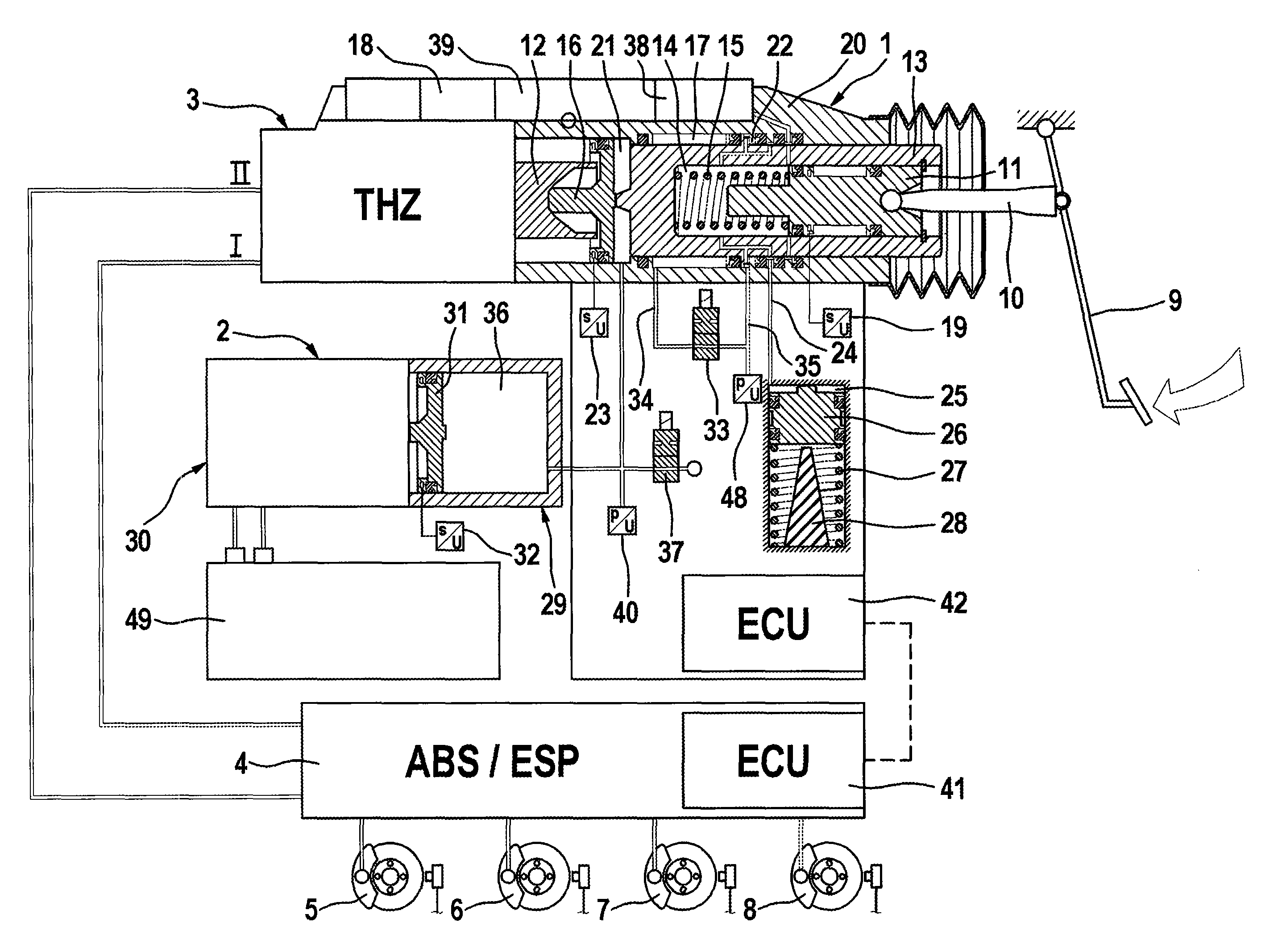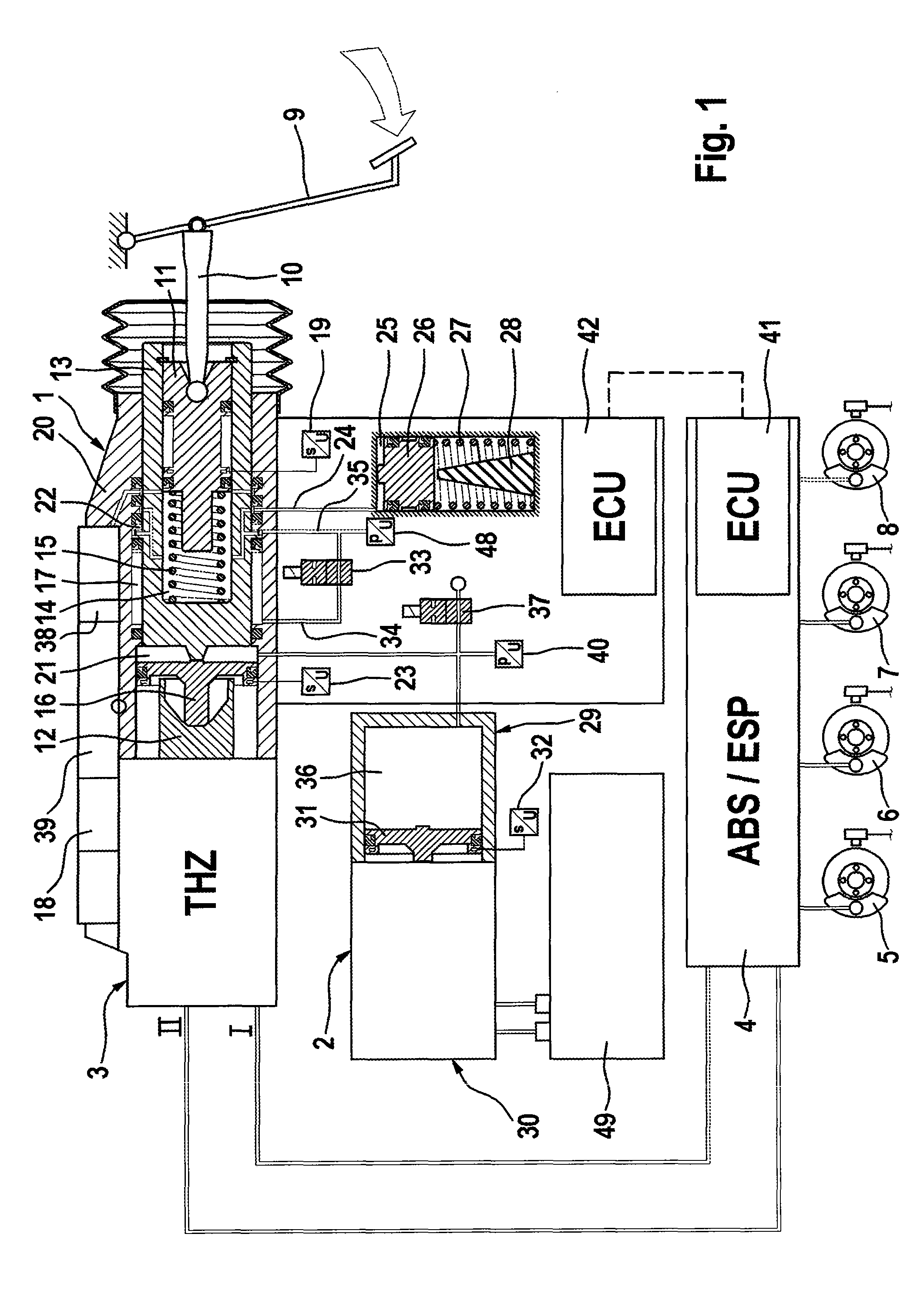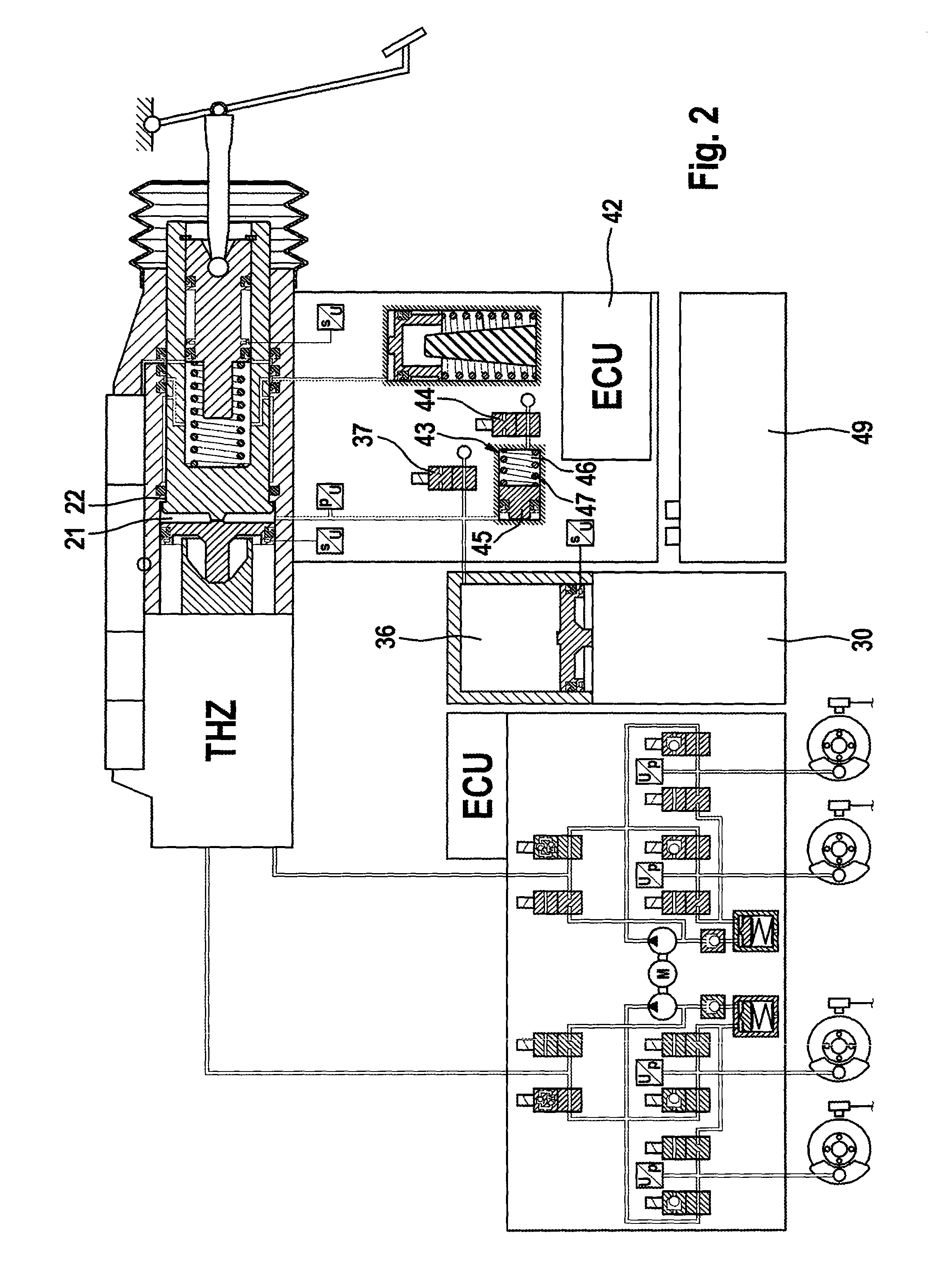Braking system for motor vehicles
a technology for braking systems and motor vehicles, applied in the direction of fluid couplings, rotary clutches, fluid actuated brakes, etc., can solve the problems of energy inefficiency, reaction effect on the brake pedal, so as to promote the failure of the braking system
- Summary
- Abstract
- Description
- Claims
- Application Information
AI Technical Summary
Benefits of technology
Problems solved by technology
Method used
Image
Examples
Embodiment Construction
[0027]The braking system according to aspects of the invention which is illustrated in the drawing is composed essentially of an actuating device 1, a pressure generating device 2—with the actuating unit and the pressure generating device forming a brake booster—and a master brake cylinder or tandem master cylinder 3 which is effectively connected downstream of the brake booster and whose pressure spaces (not illustrated) can be connected to the chambers of a first pressure medium reservoir 18 which are at atmospheric pressure. On the other hand, wheel brake circuits I, II, which, with intermediate connection of a known ABS or ESP hydraulic assembly or of a controllable wheel brake pressure modulation module, supply the wheel brakes 5-8 of a motor vehicle with hydraulic pressure medium, are connected to the pressure spaces. An electronic open-loop and closed-loop control unit 41 is assigned to the wheel brake pressure modulation module 4. The actuating device 1, which is arranged in...
PUM
 Login to View More
Login to View More Abstract
Description
Claims
Application Information
 Login to View More
Login to View More - R&D
- Intellectual Property
- Life Sciences
- Materials
- Tech Scout
- Unparalleled Data Quality
- Higher Quality Content
- 60% Fewer Hallucinations
Browse by: Latest US Patents, China's latest patents, Technical Efficacy Thesaurus, Application Domain, Technology Topic, Popular Technical Reports.
© 2025 PatSnap. All rights reserved.Legal|Privacy policy|Modern Slavery Act Transparency Statement|Sitemap|About US| Contact US: help@patsnap.com



